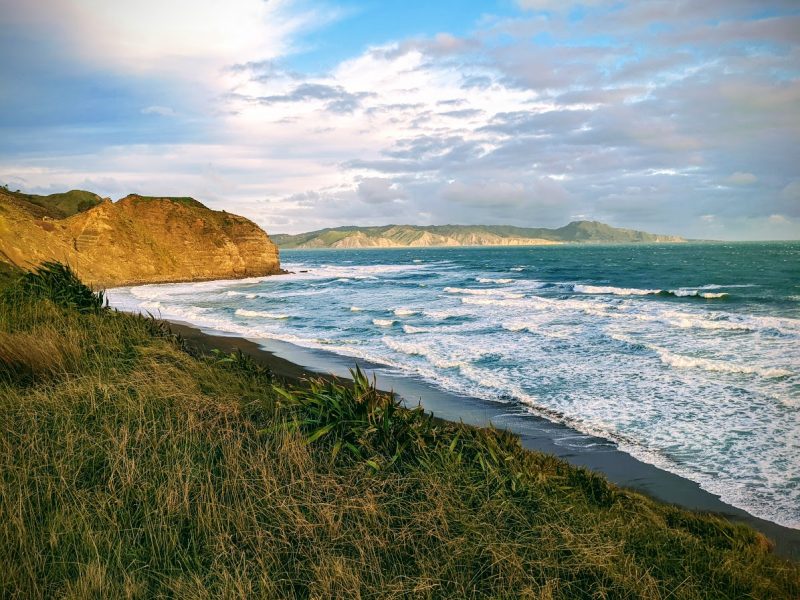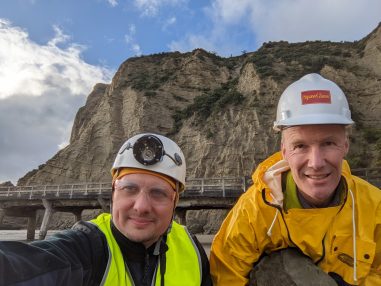Lab Experiments Revealing Role of Rock Permeability in Slow Slip Quakes
December 8, 2024

Slow slip events occur when pent-up tectonic forces are released over the course of a few days or months, unfolding like an earthquake in slow motion. They don’t cause destruction. But that does not make slow slip events less scientifically important.
In fact, their role in the earthquake cycle may help lead to a better model to predict when earthquakes happen.
In a paper published in Geophysical Research Letters, a Jackson School of Geosciences research group led by Harm Van Avendonk, Nathan Bangs and Nicola Tisato explores how the makeup of rocks, specifically their permeability — or how easily fluids can flow through them — affects the frequency and intensity of slow slip events.
In 2019 and 2022, the group traveled to New Zealand’s North Island to collect rocks from several outcrops near the Hikurangi Margin, a subduction zone off New Zealand’s coast where slow slip events occur about once a year. The researchers brought back a cache of rocks to the Jackson School, where they tested their permeability and elastic properties.

Tisato and other researchers analyzed rocks from nearby surface outcrops that were once part of the earthquake fault deep underground. Previous permeability studies have been performed only on loose sediments that have been consolidated into solid rock.
Tisato and graduate student Jacob Allen are currently analyzing rock samples from the center of the margin and testing for differences in permeability. The rocks at the northern end of this subduction zone are richer in clays than those at the southern end. Because clays are malleable and can hold a lot of water and other fluids, they are ideally suited to trap, fracture and channel those fluids. That could explain why slow slip events on the northern end of the subduction zone happen frequently, whereas they occur rarely on the southern end, Tisato said.
“We have to go through the exercise of understanding why in the north of the Hikurangi Margin there are slow slips, and why in the south of the Hikurangi Margin we have fewer slow slips,” Tisato said. “Because if we understand that, then we have an additional step to go towards the prediction.”
Three former graduate students from the Jackson School also contributed to this paper: Carolyn Bland, Kelly Olsen and Andrew Gase.
Back to the Newsletter